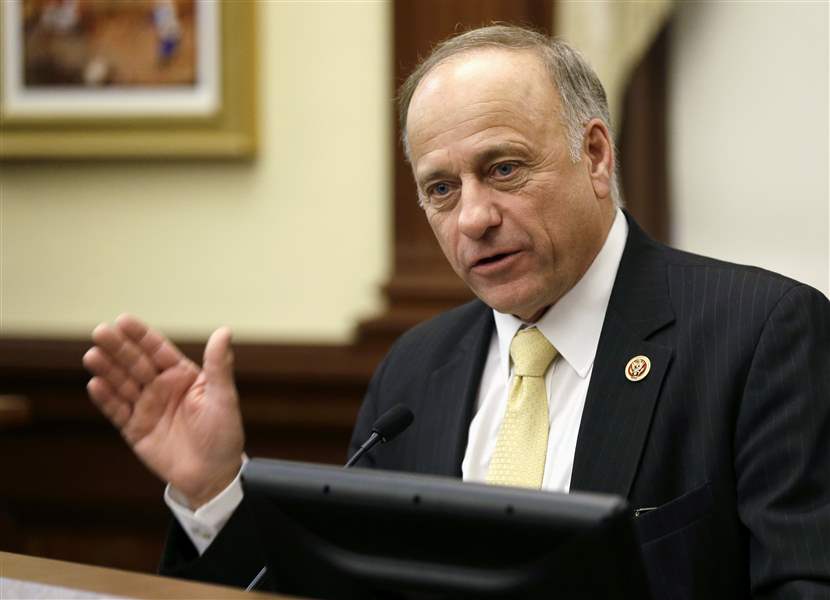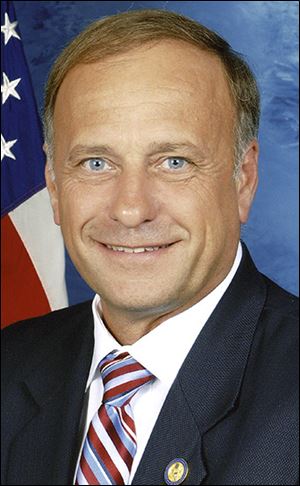
FEATURED EDITORIAL
Health and balance
3/4/2017
Republican U.S. Rep. Steve King of Iowa
ASSOCIATED PRESS
Rep. Steve King (R., Iowa) is once again taking aim at nutritional standards for school lunches set out in the Healthy, Hunger-Free Kids Act.
Mr. King’s opposition has some merit, but the law has been one of the few effective tools in addressing teenage obesity, so legislators should seek to find a middle ground.
Click here to view more Blade editorials

King
The Healthy, Hunger-Free Kids Act was passed in 2010. One of the provisions of the act, championed by Michelle Obama, mandated that school lunches meet certain nutritional guidelines in order to receive federal reimbursement. Requirements include vegetables, fruit, whole grains, caloric limits, and reduced saturated fat and sodium, for example.

Hosler
Mr. King’s bill, which he also proposed in 2015, would eliminate the standards because he believes they are difficult for schools to meet and food is being wasted, since some students have no interest in the fruits or vegetables. His belief is supported by a Harvard School of Public Health study that found that 60 percent of vegetables and 40 percent of fruit are thrown away by students.
Perrysburg Superintendent Tom Hosler told The Blade editorial board that his district had to take a popular cookie off the menu, now makes pizzas with whole-grain crusts, and eliminated a homemade soup, which was made from scratch but exceeded the sodium threshold.
For schools without the resources of Perrysburg, it is easy to see how the rule could be burdensome and a financial strain. Unfortunately, healthy foods are often pricier than less-healthy options.
Supporters of the existing law say, in some cases, a school lunch may be the only healthy meal of the day in poorer or rural districts. And staying within nutritional guidelines is a hedge against obesity, which has leveled off among many teens since the law went into place. However, severely obese rates climbed from 5.2 to 10.2 percent for adolescents aged 12-19 between 1999-2014, so there is still a need to offer healthy options on the menu.
“The days of greasy pizza and fries ... for us, we would not go back to those days. We have made it work and have shown students that the food still tastes good, but if we can sneak in the cookies, I am all for it,” Mr. Hosler said.
Why not? It seems as though the pendulum has swung from one extreme to the other in regard to school lunches. What legislators need to find is that sweet spot in the middle, where healthy options are required but districts have flexibility in shaping the rest of the menu. Completely eliminating nutritional standards is not the answer.